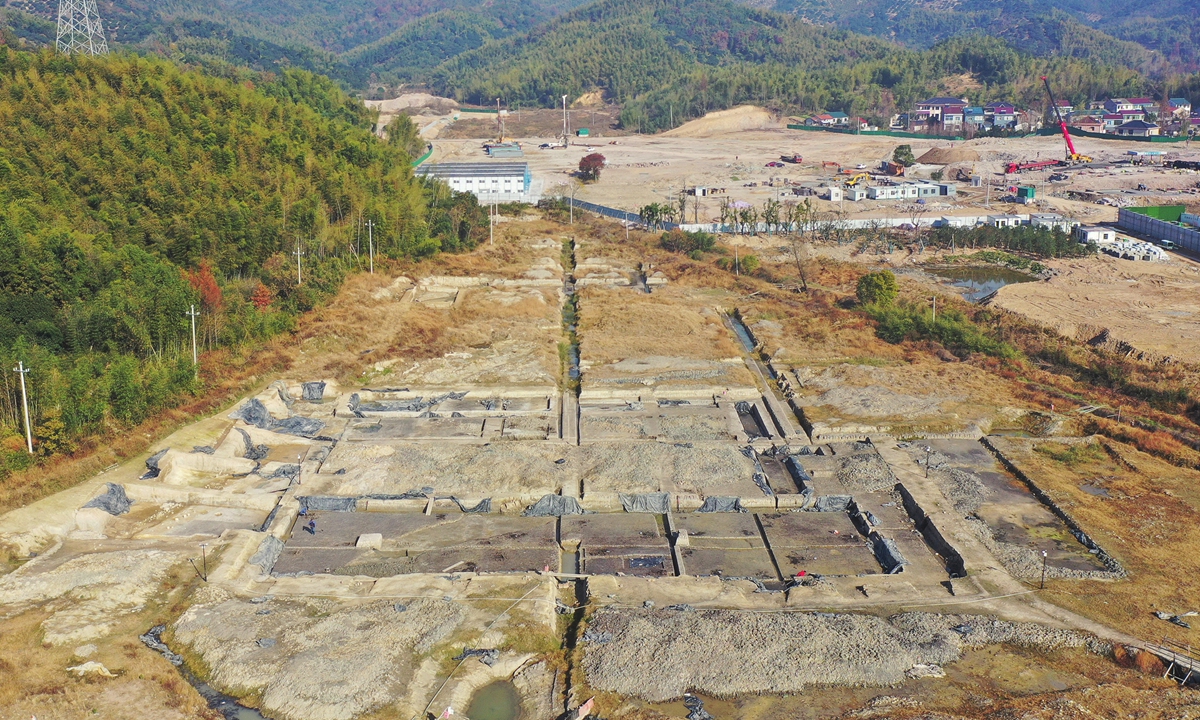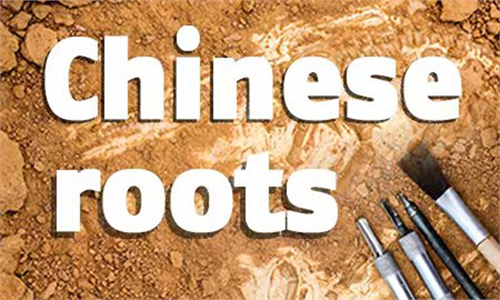ARTS / CULTURE & LEISURE
Chinese roots

The Shi'ao archaeological site in Zhejiang Province Photo: IC
Shi'ao Site: Prehistoric 'national farm' of China's Liangzhu CultureIn January 2020, a village named Shi'ao in East China's Zhejiang Province, 140 kilometers away from the ancient Liangzhu Ruins, made its name known across the country. There archaeologists found one of the biggest ancient paddy fields ever discovered in China. After a period of research, it was determined that the fields date back to 4,600 to 5,500 years ago.
Nearly 900,000 square meters in size, the paddy fields have been seen by experts as a "national farm" of the well-known Liangzhu Culture (3,300-2,600BC), a culture considered as the dawn of Chinese civilization.
Since September 2020, a-year-long archaeological excavation was conducted by local culture institutes in Zhejiang that uncovered the ruins of irrigation facilities and the traces of the roads. These finds showed that the ancient Chinese of the Liangzhu Culture had mastered mature farming techniques.
"In previous archaeological excavations we barely found ancient paddy fields as we did this time," Wang Yonglei, head of Shi'ao Site excavation team, told West China City Daily in 2021.
"This is the largest and earliest ancient paddy field discovered in China so far. It is also the most complete farm ever discovered in prehistoric archaeology," Wang added.
According to Wang, many pottery pot fragments and stone tools such as knives and axes were found at the Shi'ao Site.
Archaeologists also found the remains of a canoe that was 5.6 meters long and 0.8 meters wide.
The structure of the field is very clear. It was composed of river channels, an irrigation and drainage system and ridges. On the west side of the field a south-north-bound ancient river channel was found.
Although Shi'ao had a well-developed rice field during the Liangzhu period, it was not the core area of the civilization, but instead a remote village far away from Liangzhu City, which was located in what is today Zhejiang's capital Hangzhou.
Archaeologists found massive amount of carbonized rice. Experts speculate that 200,000 kilograms of rice may have been contained in a huge barn.
"Among all the prehistoric civilizations, the reason that the Liangzhu Culture reached the level of nation rather than a city-state ahead of all other cultures cannot be separated from its advanced farming industry," Wang added.
Global Times

